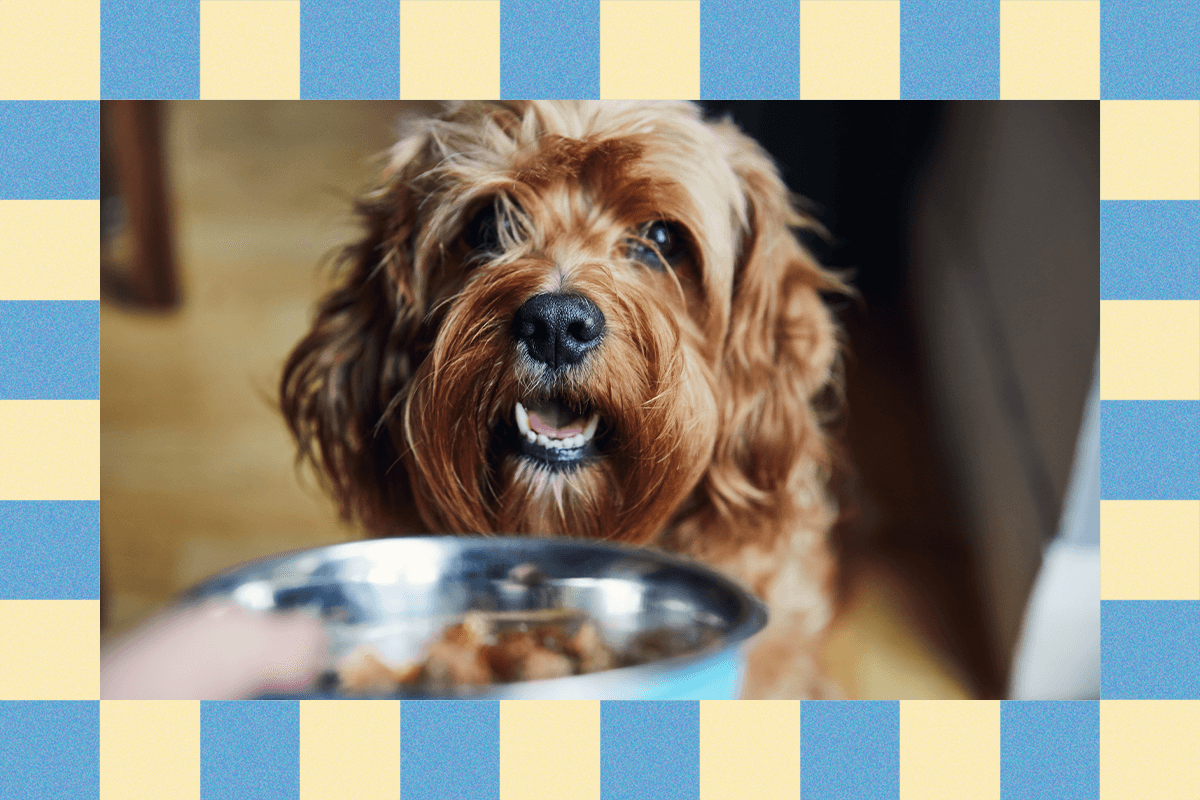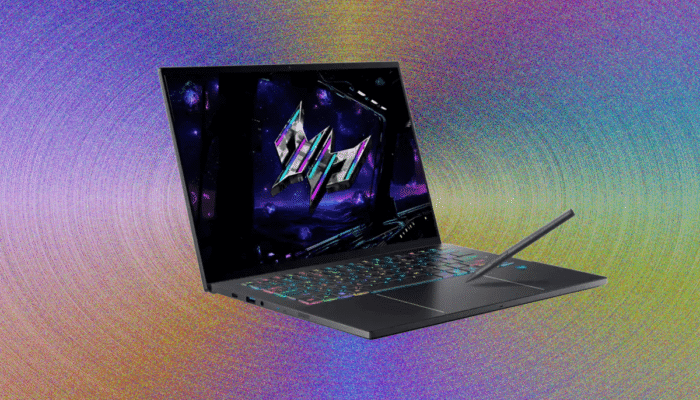All products featured on WIRED are independently selected by our editors. However, we may receive compensation from retailers and/or from purchases of products through these links. Learn more.
I recently found myself googling “how to get your cat to lose weight” and stumbled upon countless Reddit threads and pet blogs with vague, often contradictory information. Full disclosure: This particular search was brought on when my cat’s automatic litter box sent me a notification that my cat Basil was at the heaviest he’s ever been—17 pounds.
I often joke that Basil is just a big, corn-fed Missouri boy, of hardy stock. He’s always been a big cat, but after consulting my vet, she said he should ideally hover around 15 pounds. So I set out on a mission to find out how pet parents can get their often-overweight cats and dogs to lose weight healthily; especially for pet parents like me with indoor cats who live in small areas. I talked to vets and pet experts, researched, and used my own cats as guinea pigs to find out the most effective ways to get your pet to lose weight at home.
How to Tell if Your Pet Is Overweight
Before you try to get your cat (or your dog!) to lose weight, you need to know whether it’s actually overweight. According to a 2023 report from Upper Arlington Veterinary Hospital, about 55 to 60 percent of household cats and dogs are overweight. Consulting a veterinarian is best if you suspect your pet is overweight in order to get on a healthy fitness and diet plan. But initially, you can usually easily tell if the pet is overweight by checking them from top and side views: “You should be able to feel the ribs with [a] gentle touch,” says veterinarian Daniel Dixon. “When you look at them from above, you should be able to [see the] waist, where the abdomen tucks in a little bit.”
There are also body condition scoring charts for dogs and cats available online, with guidelines and visual representations of different pet weights, so you can easily compare your pet to the various body weights. Most often, you’ll be able to feel the ribs and spine without too much pressure. These metrics are based on size and length, not weight in pounds, since every pet’s body is different, and ideal weight for each will vary as well. No matter what, make sure you always consult a veterinarian for a second opinion if a diet and plan are needed.
A 14-year-long study from Purina concluded that owners who kept their dogs at a healthy weight extended their median life span by 15 percent, adding nearly two years to the lives of the Labradors in the study. It’s not only the responsible thing to do, but it will keep your fur baby around for longer.
How Can You Get Your Pet to Be More Active?
For dogs, it’s a bit simpler:
- Walk daily; dogs should have at least two 15-minute walks per day.
- Let them outside frequently and take them to dog parks (if they can safely socialize).
- Actively play with them daily, whether that be throwing a ball or engaging with chew toys like tug ropes or treat-dispensing toys.
- Use puzzle toys or lick mats to slow down fast over-eaters, and use slow feeders for meals.
For indoor cats, you may need to get more creative:
- Engage in active play for at least 30 minutes a day, whether that be with a wand toy, laser (just make sure to reward them after their “hunt”), or whatever toy they like best. (Check out my full guide to my favorite interactive cat toys for even more recommendations.)
- Same as with dogs, use puzzle toys or lick mats for dry kibble or wet food. It helps to engage them if they have to work for their food, and it slows pets who tend to eat quickly. I sometimes will just throw freeze-dried treats around for them to sniff out and find through exploration.
- Make sure you have lots of vertical spaces. I have three cat trees for my two cats, which help expand the area (vertically) that they can roam in my small apartment.
- An exercise wheel is one of the best ways to get indoor cats regularly exercising. They are expensive and large, however, taking up a big footprint of whatever room they’re in. About half of cats will take to this, especially if they’re naturally active. (I haven’t had the space or funds to test this for my own cats.)
- Have multiple cats. I know, this is a big ask. Having more than one cat helps to keep them more active, and they have a built-in friend to play with and chase when the zoomies hit. Like us, cats are social creatures who often live in colonies; in fact, certain countries require you to adopt more than one cat or ensure you already have one to prevent boredom and loneliness. I personally think every cat should have a fellow cat companion, even though my cats aren’t bonded, they play and chase each other often (not to mention keep each other company when I’m away). This greatly helps to reduce anxiety, boredom (and overeating from boredom), and destructive behaviors, and helps them socialize and get energy out in healthy ways.
Lukito
Slow Feeder Lick Mats
Catstages
Interactive Cat Treat Puzzle
Changing Your Pet’s Diet
As I’ll say about mostly everything in this guide, make sure you consult a veterinarian before making any big changes, to get a plan tailored for your specific pet and their needs.
- Incorporate moisture or wet food whenever possible, and gradually more toward wet food over dry kibble, which is often full of empty “filler” calories. “Canned wet foods have higher water content than dry,” says veterinarian Emma Choi. “Wet foods increase fullness and hydration in your pets, supporting weight loss and water intake.” This exact reason is why I’m a huge fan of pet water fountains, especially for cats, who are often chronically dehydrated. TL;DR: get your pet to drink more water whenever possible. (I sneakily add water into my cats’ wet food, toppers, purees … anything I can.
- Reduce calories. This especially means reducing treats and table food, like peanut butter or a slice of cheese, all of which have more calories per bite and are eaten very quickly.
- Consult a vet to see if a prescription weight loss diet would be best for your pet. These are formulated to help your pet feel fuller, and are fortified with extra vitamins and minerals to ensure they are getting holistic nutrition while still in a calorie deficit.
- Switch to freeze-dried food in lieu of kibble or treats. While dry food is convenient, stores longer, and is often calorie-dense, it’s less filling and easier to overfeed. I’ve been replacing kibble and treats during their puzzle or “hunting” time with the freeze-dried raw products below, which have helped to reduce overfeeding, have fewer empty calories, and are more nutrient-dense than traditional kibble.
Vital Essentials
Freeze-Dried Raw Duck Mini Nibs
Primal Pet Foods
Kibble in the Raw
Redbarn
Air Dried Powerfood
Nearly all of the veterinarians and literature I consulted cautioned against raw diets, as they could harbor potentially harmful bacteria and may not have the complete nutrition needed for a well-rounded diet.
“Raw meats mimic the natural or ancestral diets of cats as carnivores, and claim to have higher protein-to-carbohydrate ratios, along with increased antioxidants and flavonoids. But, considering their disadvantages, […] raw meats pose food safety risks due to pathogenic microorganisms,” says Choi. “A diet composed primarily of wet foods with controlled portions of dried kibble may be most recommended. Raw feeding should always be supervised by a veterinarian.”
Tech to Monitor Your Pet’s Health
Like I said, as the pet tech writer here at WIRED, my cats basically can’t pee, poop, eat, or nap without me monitoring it. Because of all of this tech, I have a pretty good idea of my cats’ usual weights, sleep patterns, and dietary habits. This is one of the most effective ways to monitor their health and find when something is out of the norm (i.e., when my automatic litter box alerted me Basil was at his highest weight ever).
Petlibro
One RFID Smart Feeder
Petkit
YumShare Dual-Hopper Automatic Feeder With Camera
Get an automatic feeder. There are so many types of automatic feeders, which can help with portion control (I’ve tested more than a dozen). Some models, like the Petlibro One RFID feeder, use a special tag to ensure only that a specific pet is getting their portion to prevent greedy animals from stealing more than their share; others, like the Petkit YumShare, have an AI-enabled camera to analyze the remaining food in the bowl and will stop dispensing to prevent overfeeding.
Automatic feeders also help manage the gorge-vomit cycle that many cats struggle with. You can portion several small meals throughout the day that will be dispensed even when you’re not there. “Weighing the cat monthly and making slow and gradual reductions in calories is the best way for them to lose weight. There are some automatic feeders that can be very helpful for this, especially since many cats enjoy snacking throughout the whole day, the ration can be split up into very small feedings throughout the entire day,” says Dixon.
Tractive
Smart Cat Tracker
Tractive
Smart Dog Tracker
Consider investing in a smart health pet collar. Like a smart ring for a human, a smart pet collar integrates health-monitoring features with trackers, a popular way to keep track of your pet, whether you’re near or far. The tracker attaches to the collar and has GPS-enabled location tracking, sleep and activity tracking, and health alerts when activity or sleep patterns change. Plus, Tractive for dogs has bark monitoring and also monitors heart and respiratory rate, alerting if either is elevated.
I’ve tested the above Tractive tracker on my cat and have begun testing the Fi Mini Smart Pet Collar in preparation for a brand new guide on smart pet collars. The smart health collar has been a great way to measure Basil’s normal activity and sleeping patterns. I set up daily activity goals to ensure he’s getting enough exercise, and the app compares him to similar cats and with his historical activity, measuring how he stacks up. I really love tracking his patterns and progress over time. I think it’s worth trying out for anyone who wants to more closely monitor their pet’s activity and set health goals.
Meet the Experts
- Daniel Dixon, founder and veterinarian at North Keller Animal Hospital
- Emma Choi, a veterinarian at Banfield Pet Hospital in San Jose, California, has a veterinarian advisory position at Mendocino Food Consulting.




